Blog & Latest Updates
Fly Fishing Articles
Insects by Common Name


Updates from January 31, 2004
Videos by Troutnut from the Namekagon River and Miscellaneous Wisconsin in Wisconsin
Swimming Baetisca Mayfly Nymph
Starring: Baetisca Mayfly Nymph
The clumsy-looking mayfly nymphs of the genus Baetisca are surprisingly good swimmers.
StateWisconsin
LocationNamekagon River
Date ShotJan 31, 2004
Date AddedMar 31, 2006
AuthorTroutnut
CameraOlympus C740UZ
Water Boatman Rowing
Starring: Corixidae Water Boatman Adult
Water boatmen are excellent swimmers, and you can see here how they use their oars to push themselves through the water, a motion easily imitated by the fly fisher.
StateWisconsin
Locationunknown
Date ShotJan 31, 2004
Date AddedMar 31, 2006
AuthorTroutnut
CameraOlympus C740UZ
Damselfly Nymph on the Prowl
Starring: Calopteryx Damselfly Nymph
Damselfly nymphs are among the most effective invertebrate predators in freshwater. You have to see one in motion to get a feel for their slow, deliberate style of stalking.
StateWisconsin
LocationNamekagon River
Date ShotJan 31, 2004
Date AddedMar 31, 2006
AuthorTroutnut
CameraOlympus C740UZ
Closeup insects by Troutnut from the Namekagon River and Miscellaneous Wisconsin in Wisconsin
Ephemera simulans (Brown Drake) Mayfly Nymph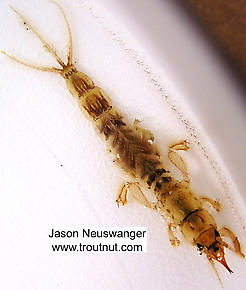 View 10 Pictures
View 10 Pictures
 View 10 Pictures
View 10 PicturesCollected January 31, 2004 from the Namekagon River in Wisconsin
Added to Troutnut.com by Troutnut on January 25, 2006
Added to Troutnut.com by Troutnut on January 25, 2006
Ephemera simulans (Brown Drake) Mayfly Nymph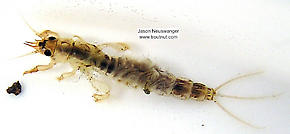 View 10 Pictures
View 10 Pictures
 View 10 Pictures
View 10 PicturesCollected January 31, 2004 from the Namekagon River in Wisconsin
Added to Troutnut.com by Troutnut on January 25, 2006
Added to Troutnut.com by Troutnut on January 25, 2006
Ephemera simulans (Brown Drake) Mayfly Nymph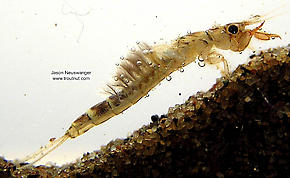 View 6 Pictures
View 6 Pictures
 View 6 Pictures
View 6 PicturesCollected January 31, 2004 from the Namekagon River in Wisconsin
Added to Troutnut.com by Troutnut on January 25, 2006
Added to Troutnut.com by Troutnut on January 25, 2006
Amphipoda (Scuds) Scud Adult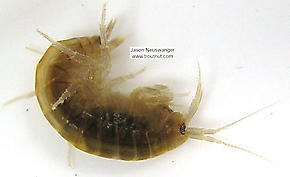 View 4 Pictures
View 4 Pictures
 View 4 Pictures
View 4 PicturesCollected January 31, 2004 from unknown in Wisconsin
Added to Troutnut.com by Troutnut on January 25, 2006
Added to Troutnut.com by Troutnut on January 25, 2006
Ephemera simulans (Brown Drake) Mayfly Nymph View 5 Pictures
View 5 Pictures
 View 5 Pictures
View 5 PicturesCollected January 31, 2004 from the Namekagon River in Wisconsin
Added to Troutnut.com by Troutnut on January 25, 2006
Added to Troutnut.com by Troutnut on January 25, 2006
Ephemera simulans (Brown Drake) Mayfly Nymph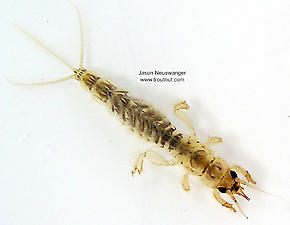 View 6 Pictures
View 6 Pictures
 View 6 Pictures
View 6 PicturesCollected January 31, 2004 from the Namekagon River in Wisconsin
Added to Troutnut.com by Troutnut on January 25, 2006
Added to Troutnut.com by Troutnut on January 25, 2006
Eurylophella (Chocolate Duns) Mayfly Nymph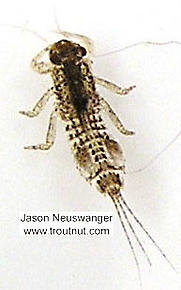 View 5 Pictures
View 5 Pictures
 View 5 Pictures
View 5 PicturesCollected January 31, 2004 from unknown in Wisconsin
Added to Troutnut.com by Troutnut on January 25, 2006
Added to Troutnut.com by Troutnut on January 25, 2006
Calopteryx Damselfly Nymph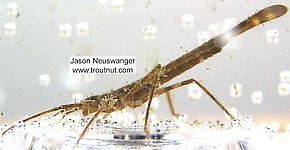 View 4 Pictures
View 4 Pictures
 View 4 Pictures
View 4 PicturesCollected January 31, 2004 from unknown in Wisconsin
Added to Troutnut.com by Troutnut on January 25, 2006
Added to Troutnut.com by Troutnut on January 25, 2006
Cambaridae Crayfish Adult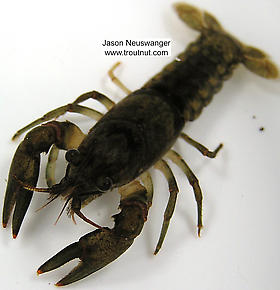 View 4 Pictures
View 4 Pictures
 View 4 Pictures
View 4 PicturesCollected January 31, 2004 from unknown in Wisconsin
Added to Troutnut.com by Troutnut on January 25, 2006
Added to Troutnut.com by Troutnut on January 25, 2006
Eurylophella (Chocolate Duns) Mayfly Nymph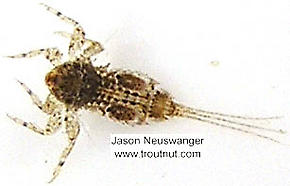 View 4 PicturesClose examination under a microscope easily showed abdominal tubercles (
View 4 PicturesClose examination under a microscope easily showed abdominal tubercles (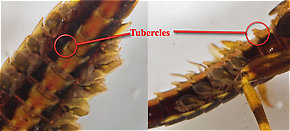 Tubercle: Various peculiar little bumps or projections on an insect. Their character is important for the identification of many kinds of insects, such as the nymphs of Ephemerellidae mayflies.).
Tubercle: Various peculiar little bumps or projections on an insect. Their character is important for the identification of many kinds of insects, such as the nymphs of Ephemerellidae mayflies.).
 View 4 PicturesClose examination under a microscope easily showed abdominal tubercles (
View 4 PicturesClose examination under a microscope easily showed abdominal tubercles (
A few (not all) of the abdominal tubercles on this Ephemerella needhami nymph are circled. They are especially large in this species.
Collected January 31, 2004 from unknown in Wisconsin
Added to Troutnut.com by Troutnut on January 25, 2006
Added to Troutnut.com by Troutnut on January 25, 2006
Ephemerella invaria (Sulphur Dun) Mayfly Nymph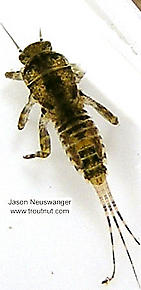 View 4 Pictures
View 4 Pictures
 View 4 Pictures
View 4 PicturesCollected January 31, 2004 from unknown in Wisconsin
Added to Troutnut.com by Troutnut on January 25, 2006
Added to Troutnut.com by Troutnut on January 25, 2006
Caenis (Angler's Curses) Mayfly Nymph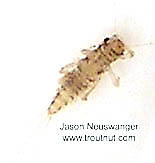 View 4 PicturesI confirmed the identity of this nymph by looking at it under a microscope to be certain of the shape of its gills and head.
View 4 PicturesI confirmed the identity of this nymph by looking at it under a microscope to be certain of the shape of its gills and head.
 View 4 PicturesI confirmed the identity of this nymph by looking at it under a microscope to be certain of the shape of its gills and head.
View 4 PicturesI confirmed the identity of this nymph by looking at it under a microscope to be certain of the shape of its gills and head.Collected January 31, 2004 from unknown in Wisconsin
Added to Troutnut.com by Troutnut on January 25, 2006
Added to Troutnut.com by Troutnut on January 25, 2006
Chironomidae (Midges) Midge Larva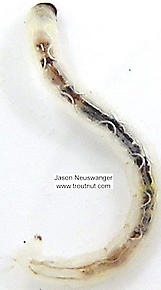 View 3 Pictures
View 3 Pictures
 View 3 Pictures
View 3 PicturesCollected January 31, 2004 from unknown in Wisconsin
Added to Troutnut.com by Troutnut on January 25, 2006
Added to Troutnut.com by Troutnut on January 25, 2006
Caecidotea (Cress Bugs) Sowbug Adult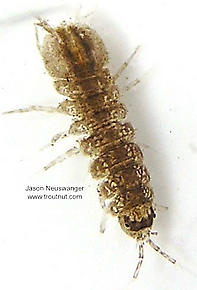 View 3 Pictures
View 3 Pictures
 View 3 Pictures
View 3 PicturesCollected January 31, 2004 from unknown in Wisconsin
Added to Troutnut.com by Troutnut on January 25, 2006
Added to Troutnut.com by Troutnut on January 25, 2006
Amphipoda (Scuds) Scud Adult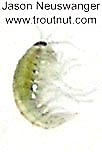 View 3 Pictures
View 3 Pictures
 View 3 Pictures
View 3 PicturesCollected January 31, 2004 from unknown in Wisconsin
Added to Troutnut.com by Troutnut on January 25, 2006
Added to Troutnut.com by Troutnut on January 25, 2006
Corixidae (Water Boatmen) Water Boatman Adult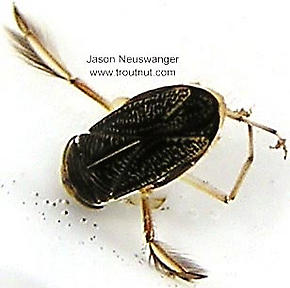 View 3 Pictures
View 3 Pictures
 View 3 Pictures
View 3 PicturesCollected January 31, 2004 from unknown in Wisconsin
Added to Troutnut.com by Troutnut on January 25, 2006
Added to Troutnut.com by Troutnut on January 25, 2006
Cyprinidae (Minnows) Minnow Adult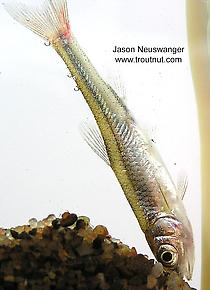 View 3 PicturesSand Shiner
View 3 PicturesSand Shiner
Notripis stramineus
 View 3 PicturesSand Shiner
View 3 PicturesSand ShinerNotripis stramineus
Collected January 31, 2004 from unknown in Wisconsin
Added to Troutnut.com by Troutnut on January 25, 2006
Added to Troutnut.com by Troutnut on January 25, 2006
Ephemerella subvaria (Hendrickson) Mayfly Nymph View 3 Pictures
View 3 Pictures
 View 3 Pictures
View 3 PicturesCollected January 31, 2004 from unknown in Wisconsin
Added to Troutnut.com by Troutnut on January 25, 2006
Added to Troutnut.com by Troutnut on January 25, 2006
Platycentropus (Chocolate and Cream Sedges) Caddisfly Larva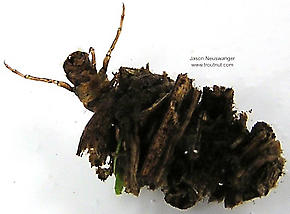 View 3 Pictures
View 3 Pictures
 View 3 Pictures
View 3 PicturesCollected January 31, 2004 from unknown in Wisconsin
Added to Troutnut.com by Troutnut on January 25, 2006
Added to Troutnut.com by Troutnut on January 25, 2006
Baetidae (Blue-Winged Olives) Mayfly Nymph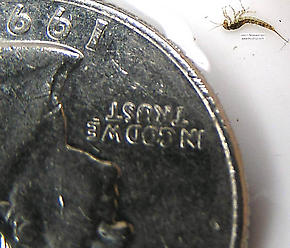 View 3 PicturesThis is the only Baetis nymph I found in my January 31st (read: not sane) sampling in 2004. I looked at this one under my small microscope and wrote down some useful identification features which aren't really visible in the pictures from my camera. This nymph had conspicuous gill veinlets (Veinlet: Short insect wing veins connecting the major longitudinal veins to the wing margin.), a pointed, slender 7th gill, tail bands on the middle and tip, and abdominal segments 5, 9, and 10 are definitely pale, with segment 8 in-between, debatably pale.
View 3 PicturesThis is the only Baetis nymph I found in my January 31st (read: not sane) sampling in 2004. I looked at this one under my small microscope and wrote down some useful identification features which aren't really visible in the pictures from my camera. This nymph had conspicuous gill veinlets (Veinlet: Short insect wing veins connecting the major longitudinal veins to the wing margin.), a pointed, slender 7th gill, tail bands on the middle and tip, and abdominal segments 5, 9, and 10 are definitely pale, with segment 8 in-between, debatably pale.
 View 3 PicturesThis is the only Baetis nymph I found in my January 31st (read: not sane) sampling in 2004. I looked at this one under my small microscope and wrote down some useful identification features which aren't really visible in the pictures from my camera. This nymph had conspicuous gill veinlets (Veinlet: Short insect wing veins connecting the major longitudinal veins to the wing margin.), a pointed, slender 7th gill, tail bands on the middle and tip, and abdominal segments 5, 9, and 10 are definitely pale, with segment 8 in-between, debatably pale.
View 3 PicturesThis is the only Baetis nymph I found in my January 31st (read: not sane) sampling in 2004. I looked at this one under my small microscope and wrote down some useful identification features which aren't really visible in the pictures from my camera. This nymph had conspicuous gill veinlets (Veinlet: Short insect wing veins connecting the major longitudinal veins to the wing margin.), a pointed, slender 7th gill, tail bands on the middle and tip, and abdominal segments 5, 9, and 10 are definitely pale, with segment 8 in-between, debatably pale.Collected January 31, 2004 from unknown in Wisconsin
Added to Troutnut.com by Troutnut on January 25, 2006
Added to Troutnut.com by Troutnut on January 25, 2006
Chironomidae (Midges) Midge Larva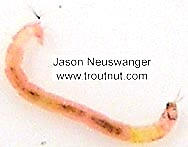 View 3 Pictures
View 3 Pictures
 View 3 Pictures
View 3 PicturesCollected January 31, 2004 from unknown in Wisconsin
Added to Troutnut.com by Troutnut on January 25, 2006
Added to Troutnut.com by Troutnut on January 25, 2006
Caenis (Angler's Curses) Mayfly Nymph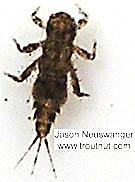 View 3 PicturesThis interesting little Caenis nymph is way darker than any of the others I collected in January 2004, probably a different species. It also has shorter tails.
View 3 PicturesThis interesting little Caenis nymph is way darker than any of the others I collected in January 2004, probably a different species. It also has shorter tails.
 View 3 PicturesThis interesting little Caenis nymph is way darker than any of the others I collected in January 2004, probably a different species. It also has shorter tails.
View 3 PicturesThis interesting little Caenis nymph is way darker than any of the others I collected in January 2004, probably a different species. It also has shorter tails.Collected January 31, 2004 from unknown in Wisconsin
Added to Troutnut.com by Troutnut on January 25, 2006
Added to Troutnut.com by Troutnut on January 25, 2006
Coleoptera (Beetles) Beetle Adult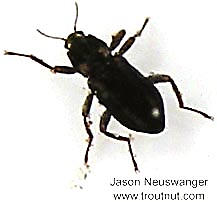 View 3 PicturesYou wouldn't know to look at it, but this is an aquatic beetle and it's in water in the photographs.
View 3 PicturesYou wouldn't know to look at it, but this is an aquatic beetle and it's in water in the photographs.
 View 3 PicturesYou wouldn't know to look at it, but this is an aquatic beetle and it's in water in the photographs.
View 3 PicturesYou wouldn't know to look at it, but this is an aquatic beetle and it's in water in the photographs.Collected January 31, 2004 from unknown in Wisconsin
Added to Troutnut.com by Troutnut on January 25, 2006
Added to Troutnut.com by Troutnut on January 25, 2006
Baetidae (Blue-Winged Olives) Mayfly Nymph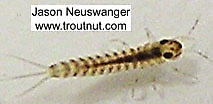 View 2 PicturesHere's a rather different tiny Baetid nymph. The tails are all unbanded, and the tergites (
View 2 PicturesHere's a rather different tiny Baetid nymph. The tails are all unbanded, and the tergites (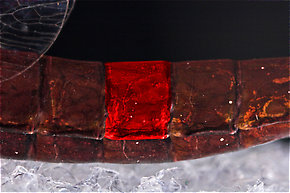 Tergite: The top (dorsal) part of a single segment on an insect's abdomen when it consists of a single chitinous plate (sclerite), or an individual sclerite if the segment has more than one.) all have a dark-colored anterior (Anterior: Toward the front of an organism's body. The phrase "anterior to" means "in front of.") 2/3 and light-colored posterior (Posterior: Toward the back of an organism's body. The phrase "posterior to" means "in back of.") 1/3. The gill veinlets (Veinlet: Short insect wing veins connecting the major longitudinal veins to the wing margin.) are indistinct. It's probably a very early instar (Instar: Many invertebrates molt through dozens of progressively larger and better-developed stages as they grow. Each of these stages is known as an instar. Hard-bodied nymphs typically molt through more instars than soft-bodied larvae.) of some Baetis species.
Tergite: The top (dorsal) part of a single segment on an insect's abdomen when it consists of a single chitinous plate (sclerite), or an individual sclerite if the segment has more than one.) all have a dark-colored anterior (Anterior: Toward the front of an organism's body. The phrase "anterior to" means "in front of.") 2/3 and light-colored posterior (Posterior: Toward the back of an organism's body. The phrase "posterior to" means "in back of.") 1/3. The gill veinlets (Veinlet: Short insect wing veins connecting the major longitudinal veins to the wing margin.) are indistinct. It's probably a very early instar (Instar: Many invertebrates molt through dozens of progressively larger and better-developed stages as they grow. Each of these stages is known as an instar. Hard-bodied nymphs typically molt through more instars than soft-bodied larvae.) of some Baetis species.
 View 2 PicturesHere's a rather different tiny Baetid nymph. The tails are all unbanded, and the tergites (
View 2 PicturesHere's a rather different tiny Baetid nymph. The tails are all unbanded, and the tergites (
One tergite of this Isonychia bicolor mayfly spinner is highlighted in red.
Collected January 31, 2004 from unknown in Wisconsin
Added to Troutnut.com by Troutnut on January 25, 2006
Added to Troutnut.com by Troutnut on January 25, 2006
Corixidae (Water Boatmen) Water Boatman Adult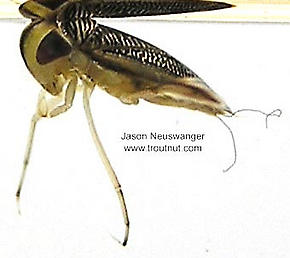 View 2 Pictures
View 2 Pictures
 View 2 Pictures
View 2 PicturesCollected January 31, 2004 from unknown in Wisconsin
Added to Troutnut.com by Troutnut on January 25, 2006
Added to Troutnut.com by Troutnut on January 25, 2006
Tipulidae (Crane Flies) Crane Fly Larva View 2 Pictures
View 2 Pictures
 View 2 Pictures
View 2 PicturesCollected January 31, 2004 from unknown in Wisconsin
Added to Troutnut.com by Troutnut on January 25, 2006
Added to Troutnut.com by Troutnut on January 25, 2006
Siphloplecton basale (Pseudo-Gray Drake) Mayfly Nymph View 3 PicturesThis one's stunned or freshly dead in the pictures, because the water in my photographing tank was a bit too warm for him after being under the bright light for a while.
View 3 PicturesThis one's stunned or freshly dead in the pictures, because the water in my photographing tank was a bit too warm for him after being under the bright light for a while.
 View 3 PicturesThis one's stunned or freshly dead in the pictures, because the water in my photographing tank was a bit too warm for him after being under the bright light for a while.
View 3 PicturesThis one's stunned or freshly dead in the pictures, because the water in my photographing tank was a bit too warm for him after being under the bright light for a while.Collected January 31, 2004 from the Namekagon River in Wisconsin
Added to Troutnut.com by Troutnut on January 25, 2006
Added to Troutnut.com by Troutnut on January 25, 2006
Ephemerella invaria (Sulphur Dun) Mayfly Nymph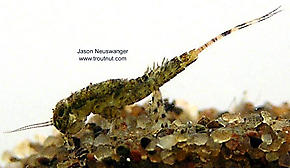 View 3 Pictures
View 3 Pictures
 View 3 Pictures
View 3 PicturesCollected January 31, 2004 from unknown in Wisconsin
Added to Troutnut.com by Troutnut on January 25, 2006
Added to Troutnut.com by Troutnut on January 25, 2006
Ephemerellidae (Hendricksons, Sulphurs, PMDs, BWOs) Mayfly Nymph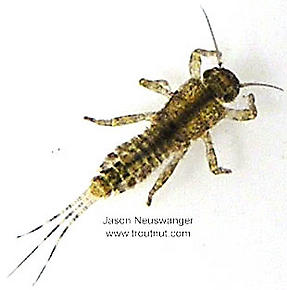 View 2 PicturesClose examination of this specimen under a microscope reveals that it has small rounded tubercles (
View 2 PicturesClose examination of this specimen under a microscope reveals that it has small rounded tubercles ( Tubercle: Various peculiar little bumps or projections on an insect. Their character is important for the identification of many kinds of insects, such as the nymphs of Ephemerellidae mayflies.) on the tergites (
Tubercle: Various peculiar little bumps or projections on an insect. Their character is important for the identification of many kinds of insects, such as the nymphs of Ephemerellidae mayflies.) on the tergites ( Tergite: The top (dorsal) part of a single segment on an insect's abdomen when it consists of a single chitinous plate (sclerite), or an individual sclerite if the segment has more than one.) and the tails are uniformly covered with short black hairs. Looking at this specimen a while later, my early observations were probably not relevant because it was such as small early instar (Instar: Many invertebrates molt through dozens of progressively larger and better-developed stages as they grow. Each of these stages is known as an instar. Hard-bodied nymphs typically molt through more instars than soft-bodied larvae.) mayfly that its identifying characteristics were not fully developed.
Tergite: The top (dorsal) part of a single segment on an insect's abdomen when it consists of a single chitinous plate (sclerite), or an individual sclerite if the segment has more than one.) and the tails are uniformly covered with short black hairs. Looking at this specimen a while later, my early observations were probably not relevant because it was such as small early instar (Instar: Many invertebrates molt through dozens of progressively larger and better-developed stages as they grow. Each of these stages is known as an instar. Hard-bodied nymphs typically molt through more instars than soft-bodied larvae.) mayfly that its identifying characteristics were not fully developed.
 View 2 PicturesClose examination of this specimen under a microscope reveals that it has small rounded tubercles (
View 2 PicturesClose examination of this specimen under a microscope reveals that it has small rounded tubercles (
A few (not all) of the abdominal tubercles on this Ephemerella needhami nymph are circled. They are especially large in this species.

One tergite of this Isonychia bicolor mayfly spinner is highlighted in red.
Collected January 31, 2004 from unknown in Wisconsin
Added to Troutnut.com by Troutnut on January 25, 2006
Added to Troutnut.com by Troutnut on January 25, 2006
Caenis (Angler's Curses) Mayfly Nymph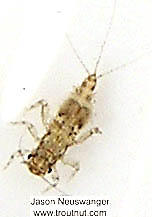 View 2 PicturesI confirmed the identity of this nymph by looking at it under a microscope to be certain of the shape of its gills and head.
View 2 PicturesI confirmed the identity of this nymph by looking at it under a microscope to be certain of the shape of its gills and head.
 View 2 PicturesI confirmed the identity of this nymph by looking at it under a microscope to be certain of the shape of its gills and head.
View 2 PicturesI confirmed the identity of this nymph by looking at it under a microscope to be certain of the shape of its gills and head.Collected January 31, 2004 from unknown in Wisconsin
Added to Troutnut.com by Troutnut on January 25, 2006
Added to Troutnut.com by Troutnut on January 25, 2006
Caenis (Angler's Curses) Mayfly Nymph View 3 PicturesI confirmed the identity of this nymph by looking at it under a microscope to be certain of the shape of its gills and head.
View 3 PicturesI confirmed the identity of this nymph by looking at it under a microscope to be certain of the shape of its gills and head.
 View 3 PicturesI confirmed the identity of this nymph by looking at it under a microscope to be certain of the shape of its gills and head.
View 3 PicturesI confirmed the identity of this nymph by looking at it under a microscope to be certain of the shape of its gills and head.Collected January 31, 2004 from unknown in Wisconsin
Added to Troutnut.com by Troutnut on January 25, 2006
Added to Troutnut.com by Troutnut on January 25, 2006
Gomphidae Dragonfly Nymph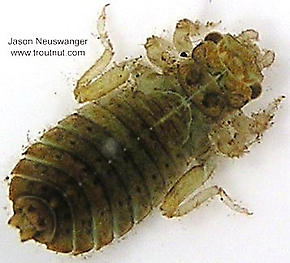 View 3 Pictures
View 3 Pictures
 View 3 Pictures
View 3 PicturesCollected January 31, 2004 from unknown in Wisconsin
Added to Troutnut.com by Troutnut on January 25, 2006
Added to Troutnut.com by Troutnut on January 25, 2006
Limnephilus (Summer Flier Sedges) Caddisfly Larva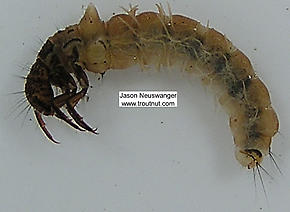 View 2 Pictures
View 2 Pictures
 View 2 Pictures
View 2 PicturesCollected January 31, 2004 from unknown in Wisconsin
Added to Troutnut.com by Troutnut on January 25, 2006
Added to Troutnut.com by Troutnut on January 25, 2006
Caenis (Angler's Curses) Mayfly Nymph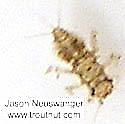 View 2 PicturesI confirmed the identity of this nymph by looking at it under a microscope to be certain of the shape of its gills and head.
View 2 PicturesI confirmed the identity of this nymph by looking at it under a microscope to be certain of the shape of its gills and head.
 View 2 PicturesI confirmed the identity of this nymph by looking at it under a microscope to be certain of the shape of its gills and head.
View 2 PicturesI confirmed the identity of this nymph by looking at it under a microscope to be certain of the shape of its gills and head.Collected January 31, 2004 from unknown in Wisconsin
Added to Troutnut.com by Troutnut on January 25, 2006
Added to Troutnut.com by Troutnut on January 25, 2006
Limnephilidae (Northern Caddisflies) Caddisfly Larva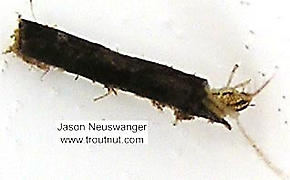 View 2 Pictures
View 2 Pictures
 View 2 Pictures
View 2 PicturesCollected January 31, 2004 from unknown in Wisconsin
Added to Troutnut.com by Troutnut on January 25, 2006
Added to Troutnut.com by Troutnut on January 25, 2006
Chironomidae (Midges) Midge Larva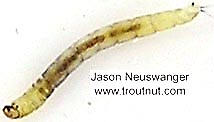 View 1 Pictures
View 1 Pictures
 View 1 Pictures
View 1 PicturesCollected January 31, 2004 from unknown in Wisconsin
Added to Troutnut.com by Troutnut on January 25, 2006
Added to Troutnut.com by Troutnut on January 25, 2006
Clitelatta-Oligochaeta (Worms) Worm Adult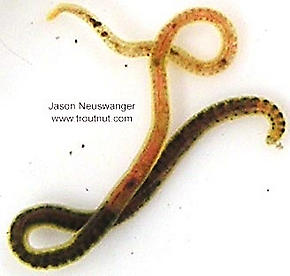 View 2 PicturesWhat a strange worm... half red, half black.
View 2 PicturesWhat a strange worm... half red, half black.
 View 2 PicturesWhat a strange worm... half red, half black.
View 2 PicturesWhat a strange worm... half red, half black.Collected January 31, 2004 from unknown in Wisconsin
Added to Troutnut.com by Troutnut on January 25, 2006
Added to Troutnut.com by Troutnut on January 25, 2006
Cyprinidae (Minnows) Minnow Adult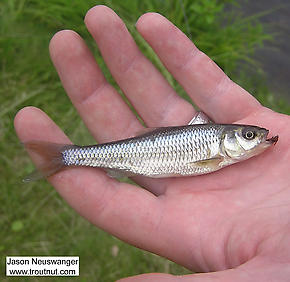 View 1 PicturesCommon Shiner
View 1 PicturesCommon Shiner
Luxilus cornutus
 View 1 PicturesCommon Shiner
View 1 PicturesCommon ShinerLuxilus cornutus
Collected January 31, 2004 from unknown in Wisconsin
Added to Troutnut.com by Troutnut on January 25, 2006
Added to Troutnut.com by Troutnut on January 25, 2006
Most recent comments on this post (latest on top)
Comment on this post
Top 10 Fly Hatches
Top Gift Shop Designs
Eat mayflies.
Top Insect Specimens
Miscellaneous Sites
Troutnut.com is copyright © 2004-2024 Jason
Neuswanger (email Jason). See my FAQ for information about use of my images.
 privacy policy
privacy policy
